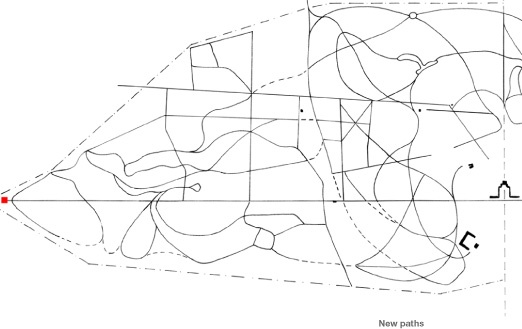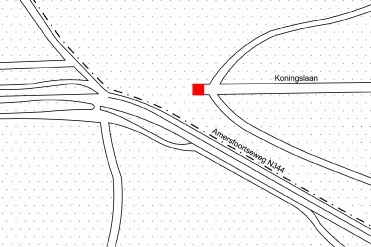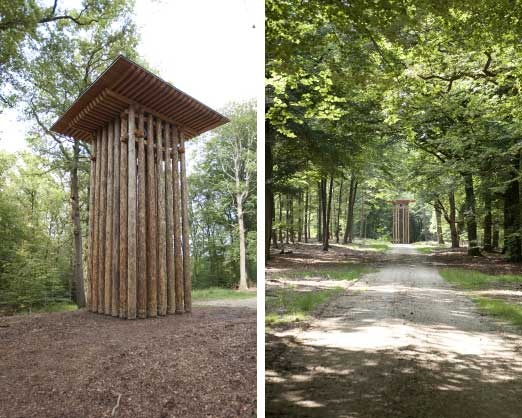

 |
Along the front of the palace, at square angles to its formal garden, runs the Koningslaan, which connects the palace with the west of the country. After some four kilometres, where the lane runs into a secondary road, a fence surrounded by dense vegetation separates the two roads. For those exploring the Palace Park it is an odd spot. The park ends abruptly, forcing them to go back or press on through the woods. The place requires a clear marking, a spatial highlight. 
|

To match the Koningslaan’s monumental dimensions the highlight had to be equally robust in size and height. In this light, it was suggested to erect a folly – a building with no practical purpose – that is ten metres tall, the maximum height allowed under the planning scheme. It is a vertical element that blends seamlessly into the perspective of the Koningslaan.

The folly
The folly, which vaguely resembles a temple, is made of wood from the palace park itself. The base consists of 38 coarsely stripped Douglas fir trunks, which form a square around a small, open space, with a narrow slit facing the Koningslaan. The folly is covered by a roof with a huge overhang that protects the structure against rain, increasing its durability.

The folly’s decoration is provided by the construction elements themselves. Just below the roof, two crossbeams on each side keep the 38 trunks together. A steel truss between the crossbeams ensures the structure’s rigidity and everything is held together by robust metal bolts.
The roof is supported by two layers of Douglas fir beams, laying at square angles to each other. The standing trunks rest on a steel support that raises them slightly off the ground and prevents them from rotting.
Visitors who venture this far into the Palace Park will be rewarded with the sight of this monumental yet serene turning point.
Client
Staatsdomein Het Loo
In collaboration with
Peter Sas Architecten
Photography
Emilio Troncoso Larrain